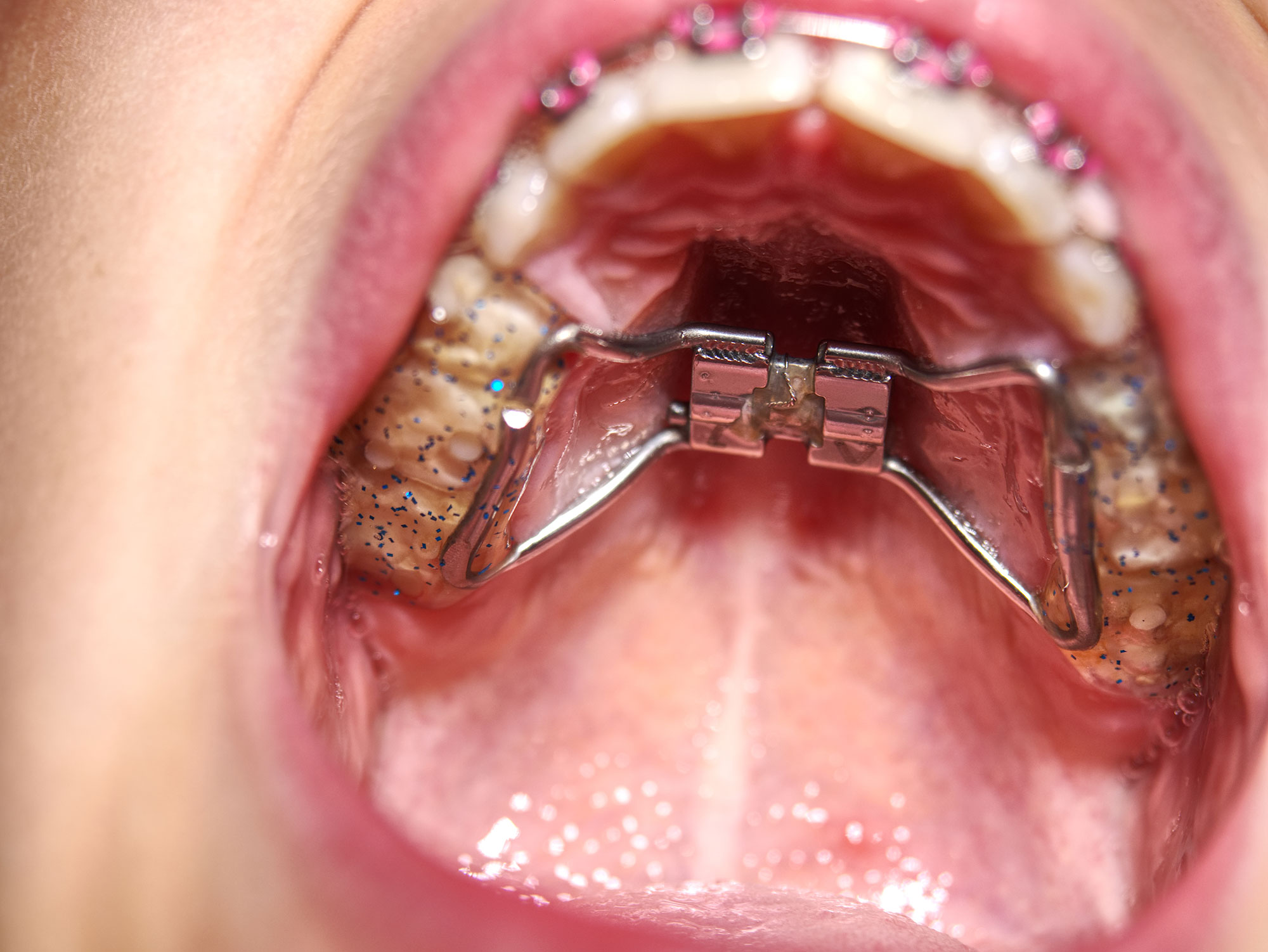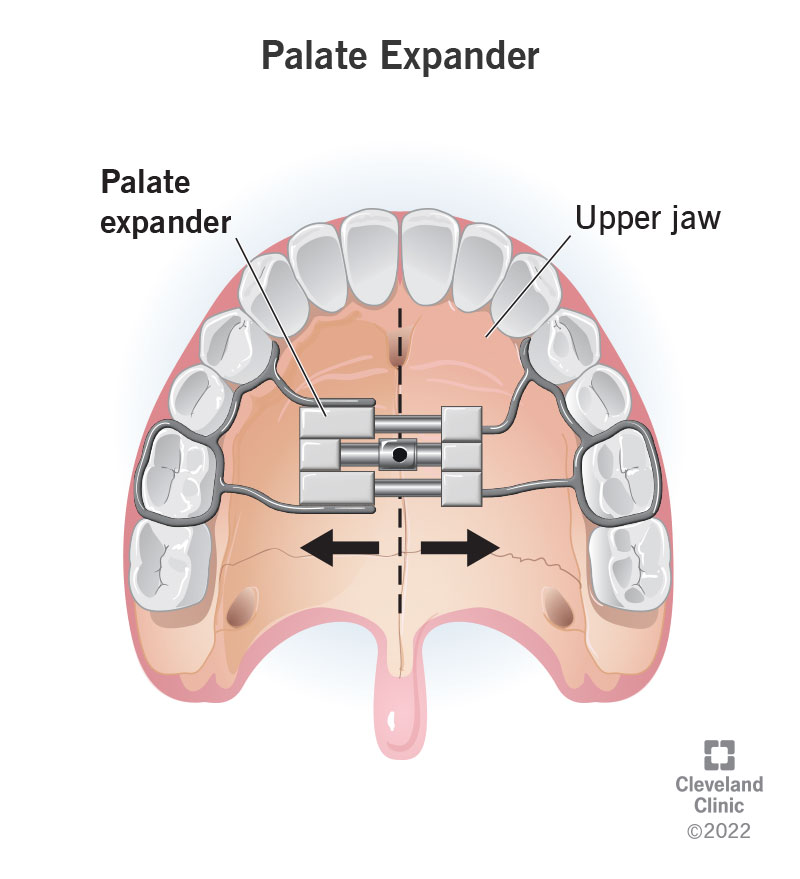Palate expander pain is a common concern for individuals undergoing orthodontic treatment. Palate expanders are dental appliances used to widen the upper jaw to correct issues such as overcrowding, crossbite, or narrow dental arches. While these devices are effective in achieving the desired results, they can cause discomfort and pain during the initial adjustment period.
In addition to medication, there are other strategies that can help manage palate expander pain. Applying a cold compress to the affected area can help numb the pain and reduce swelling. Rinsing the mouth with warm saltwater can also provide relief by soothing the tissues. It is crucial to maintain good oral hygiene and follow the orthodontist’s instructions for cleaning the palate expander to prevent any complications or further discomfort.
Palate expander pain refers to the discomfort or soreness experienced by individuals who are undergoing orthodontic treatment with a palate expander. A palate expander is a dental device used to widen the upper jaw to create more space for the teeth and improve the bite.
How Does a Palate Expander Work?
A palate expander is typically attached to the upper molars and consists of a metal framework with a screw in the middle. The screw is gradually turned by the orthodontist to widen the expander, which in turn widens the upper jaw. This process is done slowly over a period of time to allow the bones in the upper jaw to adapt and create more space.
Why Does Palate Expander Pain Occur?
Additionally, the initial placement of the palate expander and the turning of the screw can cause some irritation and sensitivity in the mouth. The presence of a foreign object in the mouth can also take some time for the individual to get used to, leading to temporary discomfort.
How Long Does Palate Expander Pain Last?
Managing Palate Expander Pain
There are several ways to manage palate expander pain and provide relief:
- Topical numbing gels: Applying a small amount of numbing gel to the gums can help numb the area and provide temporary relief from pain.
- Soft diet: Eating soft foods that require minimal chewing can help reduce the strain on the jaw and minimize discomfort.
- Oral hygiene: Maintaining good oral hygiene by brushing and flossing regularly can help prevent any additional irritation or discomfort.
Overall, palate expander pain is a common side effect of orthodontic treatment, but it is usually temporary and manageable. With proper care and communication with the orthodontist, individuals can navigate through the discomfort and achieve the desired results of a wider upper jaw and improved dental alignment.
Causes of Palate Expander Pain
1. Pressure on the Palate
One of the main causes of palate expander pain is the pressure exerted on the palate by the expander appliance. The expansion of the palate involves widening the upper jaw, and this can cause discomfort and soreness in the mouth. The pressure is necessary to create space for the teeth to align properly, but it can result in temporary pain.
2. Tissue Inflammation
During the initial days of wearing a palate expander, the tissues in the mouth may become inflamed. This inflammation is a natural response to the pressure and movement of the expander. The inflamed tissues can be sensitive and painful, causing discomfort while eating, speaking, or even at rest.
3. Irritation of the Gums
The metal or plastic components of the palate expander can sometimes irritate the gums. This can lead to gum soreness and tenderness, making it uncomfortable to chew or brush the teeth. Proper oral hygiene is essential during palate expansion treatment to minimize gum irritation and prevent further complications.
4. Adjustments and Activations
Palate expanders require periodic adjustments and activations to gradually widen the upper jaw. These adjustments can cause temporary discomfort and pain. The process of activating the expander involves turning a key or screw, which puts additional pressure on the palate. The pain usually subsides within a few hours or days after the adjustment.
5. Muscle Soreness
| Possible Causes of Palate Expander Pain: |
|---|
| Pressure on the Palate |
| Tissue Inflammation |
| Irritation of the Gums |
| Adjustments and Activations |
| Muscle Soreness |
Treatment for Palate Expander Pain
1. Over-the-counter pain relievers
2. Saltwater rinses
Another simple and effective treatment for palate expander pain is saltwater rinses. Mixing a teaspoon of salt with warm water and gargling with the solution can help reduce inflammation and soothe the pain. This can be done multiple times a day or as needed.
3. Topical numbing gels
4. Orthodontic wax
5. Adjustments by an orthodontist

If the palate expander pain persists or becomes severe, it may be necessary to visit an orthodontist for adjustments. The orthodontist can assess the situation and make necessary changes to the expander to reduce discomfort. This may involve tightening or loosening the expander or making other modifications to ensure a proper fit.
6. Proper oral hygiene
7. Patience and time
| Pros | Cons |
|---|---|
| Effective in reducing pain and discomfort | May require multiple treatment methods |
| Can be done at home | May take time for the pain to subside completely |
| Non-invasive | May require adjustments by an orthodontist |
Relief from Palate Expander Pain
https://upload.wikimedia.org/wikipedia/commons/c/ca/1×1.png
Experiencing pain from a palate expander can be uncomfortable and frustrating. However, there are several methods that can provide relief and help alleviate the discomfort. Here are some strategies to consider:
1. Over-the-counter pain medication: Taking over-the-counter pain medication such as ibuprofen or acetaminophen can help reduce the pain associated with a palate expander. Be sure to follow the recommended dosage instructions and consult with a healthcare professional if you have any concerns.
2. Cold compress: Applying a cold compress to the affected area can help numb the pain and reduce swelling. Wrap an ice pack or a bag of frozen vegetables in a thin cloth and hold it against the outside of your mouth for 10 to 15 minutes at a time. Repeat this process several times a day as needed.
3. Saltwater rinse: Gargling with warm saltwater can help soothe the pain and promote healing. Dissolve half a teaspoon of salt in a glass of warm water and swish it around in your mouth for about 30 seconds before spitting it out. Repeat this rinse a few times a day to alleviate discomfort.
4. Soft foods: Stick to a soft food diet while experiencing palate expander pain. Avoid hard, crunchy, or chewy foods that can aggravate the discomfort. Opt for mashed potatoes, yogurt, soup, smoothies, and other easy-to-eat options until the pain subsides.
5. Oral numbing gel: Applying an oral numbing gel to the affected area can provide temporary relief from pain. Follow the instructions on the packaging and apply the gel as directed. Be cautious not to apply too much, as it can numb the entire mouth and interfere with eating and speaking.
Remember, everyone’s experience with palate expander pain is different, and what works for one person may not work for another. It’s essential to find the relief methods that work best for you and consult with a healthcare professional if you have any concerns or questions.

Dr. Fidel Cann: Esteemed orthodontist with a lifelong dedication to enhancing smiles and oral health. Pioneering expertise, compassionate care.






